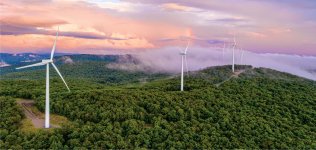Hillhater said:
Sure, if you say so,.. and folk like Musk have been saying for years that their NMC packs are near $100/kWh !...
......but where are they ?
Those batteries are never made available "at cost" at the retail level. For the year 2020, the auto industry average production cost for EV battery packs is $137/kWh according to Bloomberg New Energy Finance.
I assume you know that “only” 60kW on 48v, would require 1200+ amps ?
.. which “low cost” 48v , 60kW, motor and controller are you thinking of ?
I'm aware of this amount of current being required. The trick is to use high-current, low voltage IGBTs when making the inverter. This keeps component costs down versus going to a higher-voltage, less current system of similar power capability. By keeping the pole count on the electric motor down, it would result in a powerband appropriate for a car.
There is no shortage of systems used in cheap Chinese EVs in the $1,XXX retail price range that come halfway to that 60kW spec(the cost would be a lot less if bought in bulk or even at manufacturer cost), which in a streamliner, 20-30 kW is still more than enough power to reach 90 mph. Mild hybrid systems used in modern ICE cars have most of the components there as well. Re-designing the inverter with higher current capability and going to a lower pole count motor would be relatively trivial and inexpensive, compared to increasing voltage for the same desired power and having to use more expensive transistors. Getting to 50-60 kW peak is what would give it acceptable acceleration, for not much added cost versus the Chinese offerings, on the order of $1XX-2XX more expense. The cost per kW of an inverter does not scale linearly, and each added kW gets cheaper than the previous kW.
There is a downside to what I'm proposing. Increased I^2*R losses. You'll need heavier duty wiring, which will add 30+ lbs to the car. The mechanicals will need to be able to handle the torque, which is also slightly more weight, probably 30-50 lbs to the entire car. But the goal is to design an affordable low-cost EV, not a performance car. The Chinese are well ahead of everyone on this game, which is a shame.
A stock VW Beetle engine even back then would have been 20+ kW. !
First, when I originally quoted your post, you were missing a number and I thought you meant some small number of kW, not specifically 1 kW. But due to such low drag coefficient, a converted to EV Volkhardt V2 Sagitta could probably do 70 mph on ~6-7 kW, even factoring in that it is close to 2,000 lbs. An original first model VW Beetle will require significantly more than 5 kW to do 70 mph and wouldn't even reach it on its stock 18 kW engine, topping out at 62 mph. The Volkhardt V2 Sagitta could reach 93 mph on the original Beetle engine with the same amount of power.
That said, it is possible to build a 1-person car capable of maintaining 70 mph on just 1 kW. If my legs could produce 1 kW for long enough, my Milan SL velomobile would reach 70 mph on flat ground. I can currently reach about 50 mph, unmotorized, probably using somewhere around 500W to do so.
The benefits of aero also apply to gasoline-powered cars every bit as much as EVs. We could have had 40 mpg V8 musclecars in the 1970s and 70 mpg 4-cylinder midsized cars in the 1990s if load reduction would have been a focus in vehicle design. It never was a focus, and still isn't, to the detriment of everyone. Making cars have more mass and drag also makes cars a lot more expensive to build and operate than they need to be.



![ATTACH]](/sphere/proxy.php?image=http%3A%2F%2F%5BATTACH+type%3D%22full%22+alt%3D%2225B898B4-7528-41AF-8740-F007F2BAF292.jpeg%22%5D314648._xfImport%5B%2FATTACH%5D&hash=6882d7de522741da6d612773b610e0e4)